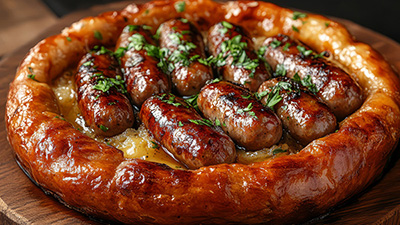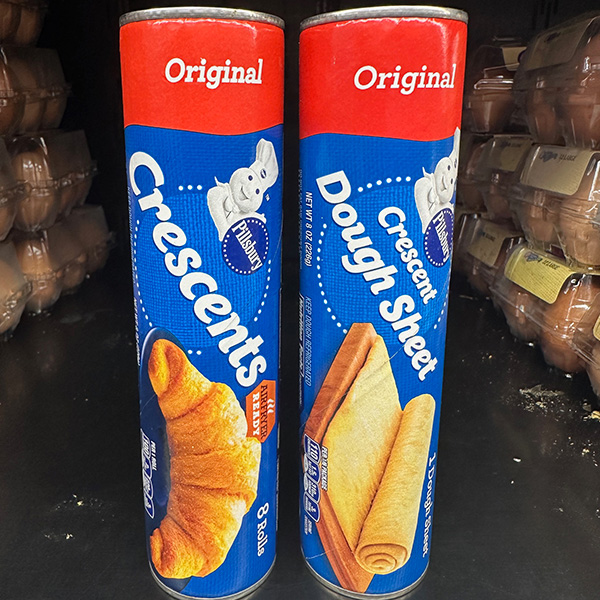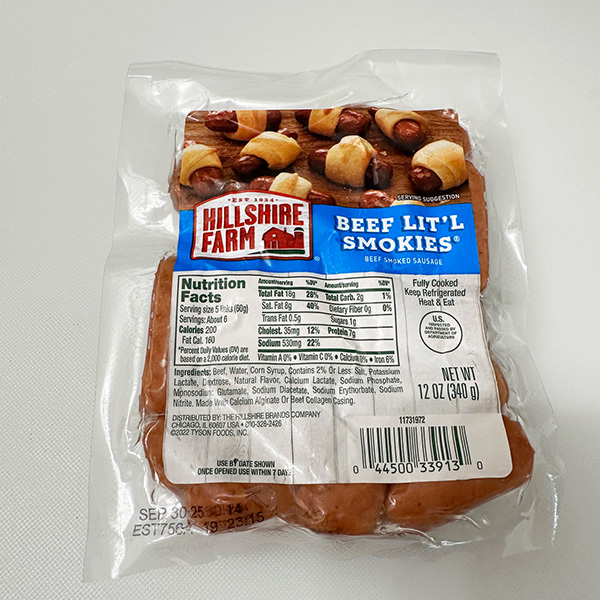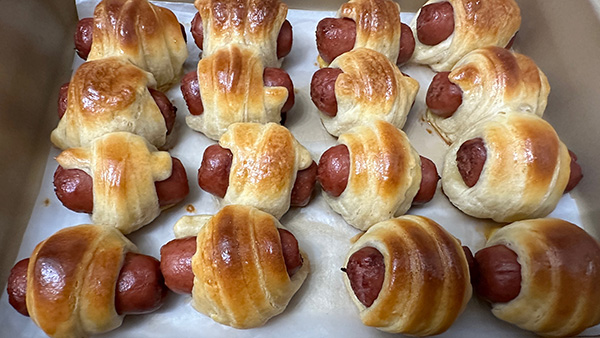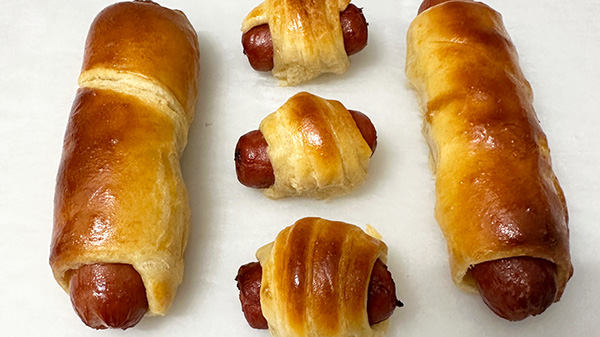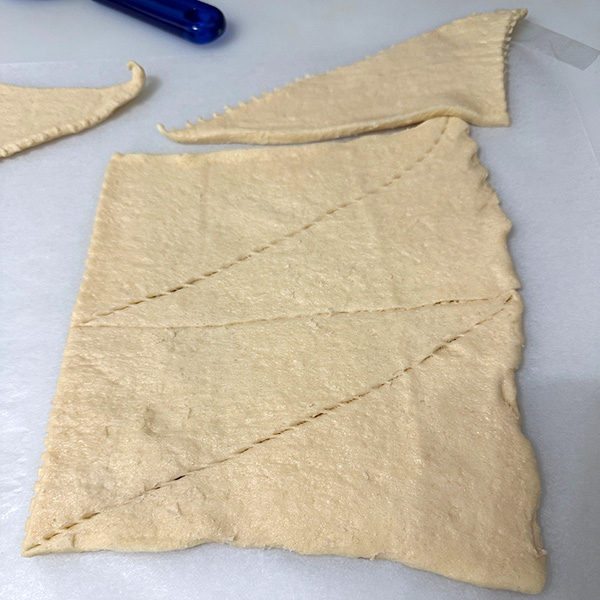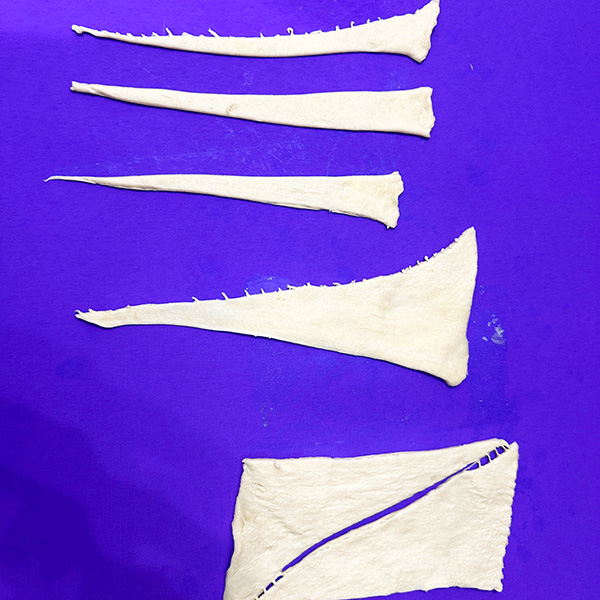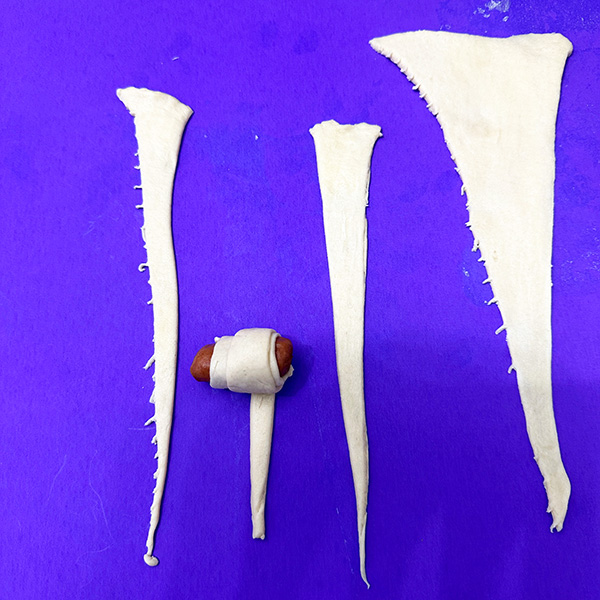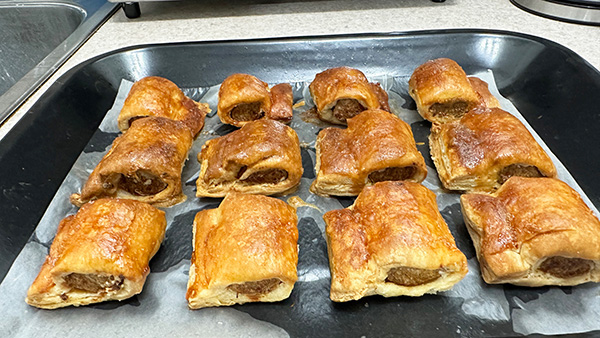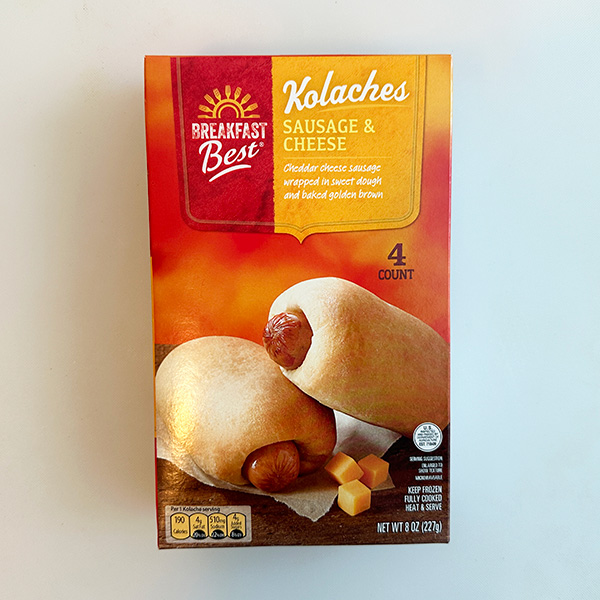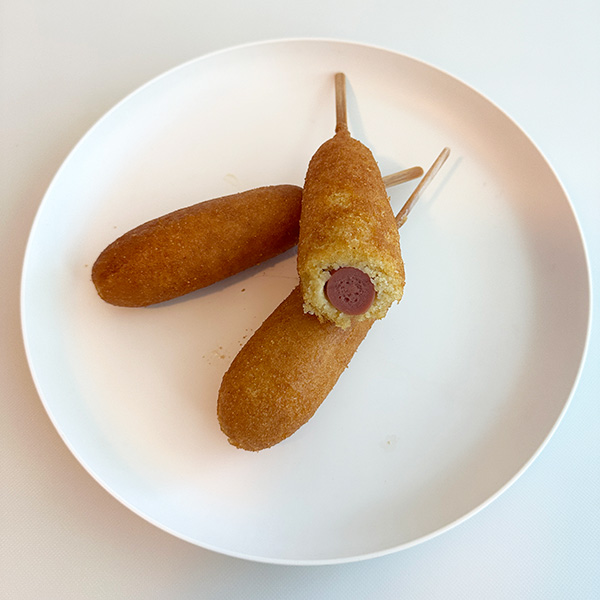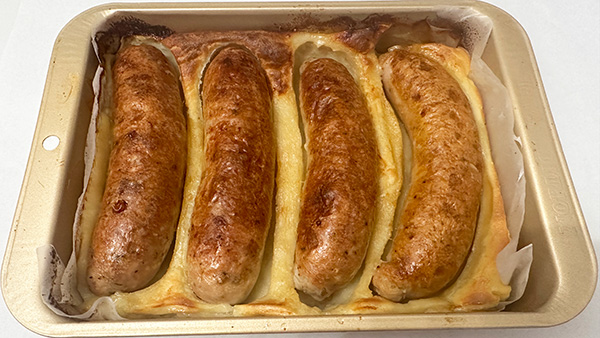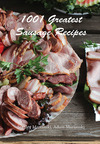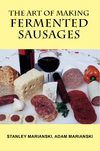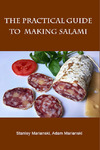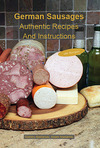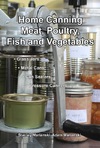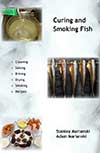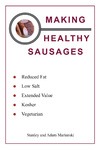Meats and Sausages
Sausage Rolls - Dough Sausages
A sausage roll is a savoury dish, consisting of sausage meat wrapped in puff pastry. The modern sausage roll likely originated in 19th-century France as a more refined meat-and-pastry dish, but it gained widespread popularity as an inexpensive street food in Britain starting in the early 1800s. Its history can be traced back to ancient Greek and Roman times, when meat was wrapped in dough, but the specific sausage roll we know today evolved in Britain from a simple, affordable food to a beloved national snack. Although variations exist throughout Europe, the USA, and in other regions, the sausage roll is most closely associated with British cuisine. In the 19th century, they were made using shortcrust pastry instead of puff pastry.
There is a variety of dough sausages, small, large, made of different meats; however, they all share a common characteristic: they are wrapped in dough and glazed with egg or milk before being baked. Given that there are many types of dough, the whole subject can be pretty confusing. To simplify, let's first eliminate battered sausages from our discussion; all information in this chapter will then pertain to dough sausages.
Battered and Dough Sausages
The difference between battered sausages and sausages wrapped in dough, also known as sausage rolls, lies in the type of coating used and the preparation method. Generally, when discussing "dough sausages," we are referring to sausages that are wrapped in various kinds of dough and baked.
- Battered Sausages (battered dough must have eggs) - these sausages are coated in a thin, pourable batter made from ingredients like flour, egg, and liquid (such as milk or water). Baking powder or soda may be added for a lighter texture. The batter is whisked or beaten to achieve a smooth consistency. After being coated in the batter, they are typically deep-fried until golden brown and crispy.
- Dough Sausages (dough doesn't have to contain eggs) - These sausages are enclosed in dough, which is a thicker, pliable mixture of flour/meal and liquid. Dough has less liquid than batter and can be shaped, rolled, or kneaded. There are various types of dough used, including puff pastry for sausage rolls and brioche dough for saucisson brioché. The sausage is wrapped in the dough, and then baked until the dough is cooked through and often golden brown.
Popular Dough Sausages
The term "dough sausages" refers to sausages that are wrapped in different types of dough, depending on regional and cultural preferences. The most common doughs used are crescent roll dough (for Pigs in a Blanket) and puff pastry (for Sausage Rolls), but pretzel dough and kolache doughare also popular.
1. Pigs in a Blanket with Crescent Roll Dough
Pigs in a blanket are a classic appetizer consisting of small sausages or hot dogs wrapped in dough and baked until golden brown. The style of the "blanket" varies significantly between the U.S. and the U.K. This is a popular, fast, and easy method that delivers an excellent and tasty product. It requires pre-made dough and fully cooked mini sausages.
Common choices include cocktail franks (or "little smokies"), cut-up hot dogs, or even veggie dogs. The dough is often store-bought canned crescent roll dough.
Pillsbury® Crescent Dough is a refrigerated, pre-made dough that comes in a can, typically shaped like a sheet or triangles. Pillsbury introduced crescent rolls in 1965, and they are available everywhere. Crescent dough is known for its flaky, buttery texture when baked and is used to make a variety of sweet and savory dishes, including crescent-shaped rolls, which are a type of bread roll.
If you have the time and dedication, nothing is stopping you from making your dough and cutting down hot dogs to a smaller size. However, when you throw a big party and you need platters with hundreds of cocktail sausages, using pre-made Pillsbury dough and Lit'l Smokies® by Hillshire Brands is a time saver.
Little smokies are fully cooked, but they feel wet and slimy when taken out of a package. To clean them, wash with water, drain, and pat dry. Keep the tube of refrigerated dough cold until the last moment, as it is easier to work with cold dough. Take the dough sheets out of the tube. There are two sheets, each having two perforated right-angle triangles. Separate the triandles by cutting perforations or by pulling them away from the sheet. Instead of dividing the dough sheet into triangles, cut it into rectangles to accept whole hot dogs or frankfurters.
American Pigs in a Blanket
In the U.S., the dish is typically made with cocktail-sized sausages wrapped in refrigerated crescent roll or biscuit dough, or puff pastry. They are a popular snack and party food, often served with dipping sauces like ketchup, mustard, or cheese sauce. The sausages are wrapped in dough and baked until golden brown. Variations:
- Cheesy: Add a small piece of cheese inside the roll for a gooey filling.
- Seasoned: An egg wash can be brushed on top before baking to help seasonings like everything bagel seasoning or sesame seeds stick.
- With puff pastry: For a flakier and more buttery "blanket," puff pastry can be used instead of crescent roll dough.
British Pigs in Blankets
In the United Kingdom, "pigs in blankets" refers to a Christmas side dish of small sausages, such as chipolatas, wrapped in strips of bacon.
- Small sausages (chipolatas are traditional) wrapped in streaky bacon.
- The sausages are baked or roasted alongside the Christmas turkey.
- They are a seasonal holiday tradition and are considered a staple accompaniment to Christmas dinner.
In Germany, pigs in blanket are known as Würstchen im Schlafrock ("sausages in a dressing gown") and are usually wrapped in puff pastry.
A sheet of pre-made Pilsbury dough from the tube. Such tubes can be found in every supermarket in a refrigerated cooler.
Remove cold dough from refrigerator and separate the perforated triangles by pulling them apart with your fingers, cutting with a knife, or with a pizza cutter. It is harder to separate the triangles when the dough is warm.
Once the triangles are separated, cut each triangle lengthwise into three equal parts. It is easier to start cutting from the broadest part (the base of the triangle) toward the thin part. Those smaller triangles are a perfect fit for accommodating little smokies. You can get 12 cocktail sausages from one sheet.
Place the little smoky on the widest end of the triangle and roll it up to the narrow end. Place smokies on an oiled pan or a pan lined with parchment paper. Many people struggle to remove small blankets after baking because they use a general-purpose wax paper. Make sure you have a good quality parchment paper rated for 450° F (232° C), which is perfect for baking. If unsure, sprinkle some flour on the paper before placing sausages there, or slightly grease the pan if not using the paper.
Short sausage rolls in puff pastry. An easier way to make small sausages. These sausages were placed on a rectangular sheet of dough, and the dough was folded over the sausage.
Apply egg wash (optional). You can top egg wash with sesame seeds, poppy seeds, onion flakes, or coarse salt. Bake at 350° F (177° C) for 15 minutes until they are golden brown.
Baking temperatures and time are often given in a range, for example, 350-375° F (177- 190° C) for 15-12 minutes, due to the variation in oven temperatures.
Unlike pigs in a blanket, where mini frankfurters are used, British sausage rolls are made with pork sausage meat and they are longer than pigs in a blanket. A fresh pork sausage seasoned with sage and stuffed in edible casings is perfect.
You can refrigerate assembled and unbaked sausage rolls (without the egg wash on top) for up to 24 hours. Brush with the egg wash before baking, and bake for a few minutes more.
Sausage rolls are often served with a dipping sauce such as ketchup, honey and mustard, or pickles and chutneys.
Egg Wash
Applying egg wash or liquid butter is all about appearance, as they will not change the texture or flavor of baked sausage rolls.
- Ingredients: a mixture of beaten egg (whole, white, or yolk) and a liquid like water, milk, or cream.
- Purpose: to create a shiny, golden-brown crust and to help toppings like sugar, poppy, and sesame seeds stick to the surface.
- Appearance: creates a glossy, golden-brown finish and a more professional look. Different types of egg wash (e.g., egg yolk only, egg white only, egg with milk/cream) can be used to achieve varying degrees of shine and color.
- Summary: Select an egg wash for a shiny, golden-brown crust and a more polished appearance.
2. Pretzel Dough Wrapped Sausages
A more recent variation is where bigger sausages, often bratwurst or hot dogs, are wrapped in pretzel dough. Uses pretzel dough, which requires a boiling step in baking soda water before baking to achieve the characteristic pretzel texture and color. The pretzel dough is rolled out, wrapped around cooked sausages, and then boiled in baking soda water for a short time to achieve the characteristic pretzel texture. It is then baked until golden brown.
3. Sausage Rolls with Puff Pastry
This version is popular in the UK and Australia. Puff pastry sheets are used to wrap sausage meat. You can use ready-made pastry sheets or make your own rough puff pastry. Savory additions like onions, apples, cheese, or herbs can be added to the sausage meat mixture.
Short sausage rolls, puff pastry.
Sausage rolls, puff pastry.
4. Sausage Rolls with Pizza Dough
Pizza dough can be a good substitute for a different texture. The pizza dough is rolled out and cut into strips to wrap around the sausages.
5. Kolaches (Klobasneks)
A Texan adaptation of a Czech pastry, Klobasneks are savory, often featuring a sausage wrapped in a sweet dough. Uses a sweet, yeast-leavened dough, different from the traditional crescent or puff pastry doughs. The dough is prepared, allowed to rise, then rolled out and used to encase sausages before baking.
A Texan adaptation of a Czech pastry, Klobasneks are savory, often featuring a sausage wrapped in a sweet dough. Uses a sweet, yeast-leavened dough, different from the traditional crescent or puff pastry doughs. The dough is prepared, allowed to rise, then rolled out and used to encase sausages before baking.
Difference Between Pigs in Blankets and Sausage Rolls
- Pigs in Blankets - crescent roll dough. Small, bit-sized portions, cocktail sausages. snacks, mini-sized sausages or hot dogs cut into sections. Mild flavor.
- Sausage Rolls - puff pastry, shortcrust pastry, bread dough, pizza dough. Larger sausages, larger, more elongated pastries, can be a meal or a snack. Stronger sausage flavor.
6. Corn Dog
A corn dog is a savory and sweet treat that consists of a hot dog on a stick, coated in a thick layer of cornmeal batter, and deep-fried until golden brown. It is a popular street food and fair food, particularly associated with American cuisine. The basic ingredients for a corn dog are simple and include:- Hot dogs: The core of the corn dog is typically beef, pork, or a combination.
- Cornmeal batter: Made with yellow cornmeal, all-purpose flour, sugar, baking powder, buttermilk, egg, and salt.
- Wooden skewers: Used to hold the hot dog for dipping and eating.
- Vegetable oil: For deep-frying.
Processing Steps:
- A hot dog is skewered on a wooden stick.
- It's dipped in a thick cornmeal batter, ensuring complete coverage.
- The battered hot dog is deep-fried in hot oil until it reaches a golden-brown color and the batter is cooked through.
Serving
Corn dogs are typically served on a stick and can be enjoyed plain, with ketchup and mustard, or with a variety of other toppings and sides. Popular choices include: ketchup, mustard, relish, cheese, barbecue sauce, and various types of aioli. For sides, consider French fries, onion rings, coleslaw, baked beans, macaroni and cheese, or potato salad.
7. Toad in the Hole
Toad in the hole is a traditional British dish consisting of sausages baked in a Yorkshire pudding batter. The dish is typically served with onion gravy and vegetables. The sausages are usually browned first, then placed in a hot oven-safe dish. A cold Yorkshire pudding batter is poured over and around the sausages, not exceeding half of their height, and the dish is baked at 420°F (215 °C) until the batter is puffed and golden brown. Toad in the hole is typically served hot, immediately after baking, often with onion gravy and vegetables like peas, carrots, or mashed potatoes.
The dish originated in 18th-century England as a way to stretch out meat and make meals more filling, particularly in poorer households. The use of inexpensive Yorkshire pudding batter helped make a small amount of meat go further. The name "toad in the hole" is thought to come from the way the sausages resemble toads peeking out of their burrows as the batter rises around them during baking. There's no evidence of toads ever being an actual ingredient in the dish.
Traditional Yorkshire Pudding
Yorkshire pudding is a baked pudding made from a batter of eggs, flour, and milk, with salt and pepper for seasoning. It's a popular English side dish, often served with roast beef and gravy, especially as part of a traditional Sunday roast. The batter is poured into a hot pan coated with melted beef drippings or a thin layer of oil and baked at 220-230° F (428-446° C), which causes it to puff up and become crispy. The inside remains soft and moist. When cooked correctly in a traditional Yorkshire pudding tin, it forms a distinct cup shape with a hollow center, ideal for holding gravy.
Ready to mix, Yorkshire pudding from the UK company Goldenfry has been making pre-mixed Yorkshire Pudding since 1958. Just add water, eggs, and bake for a perfect pudding every time.
Image
Making Yorkshire Pudding
4 eggs
140 g all-purpose flour (5 ounces)
200 ml milk (6.6 oz fl)
3 g salt (1/2 tsp)
1 g pepper (1/2 tsp)
Whisk the eggs and flour together. Add milk, salt, pepper, and blend well. Rest for 60 minutes in the refrigerator before use.
Note: For best results, transfer to an airtight container and refrigerate up to 24 hours. Remove from the refrigerator while you preheat the oven for baking.
Pour the pudding when still cold.
Liquid Butter
Applying egg wash or liquid butter is all about appearance, as they will not change the texture or flavor of baked sausage rolls.
- Ingredients: Melted butter or vegetable oil.
- Purpose: To add richness, flavor, and some browning to the crust.
- Appearance: Creates a golden, crispy, and flavorful crust, but it may not be as glossy as an egg wash due to the absence of shine.
- Summary: Select liquid butter for a rich, buttery flavor and a softer crust.
Notes: Apply butter at the end of a bake as it can seep into the baked product.
Cream and milk contain sugars (lactose), which contribute to a Maillard reaction that aids browning. Melted butter is often applied to Kolaches.
After egg wash is applied, sesame or poppy seeds can be sprinkled on top to create a different look and flavor.
More About Egg Wash
Egg Wash = 1 Whole Egg + 1 Tablespoon of Water or Milk (optional).
Milk/cream: matte finish, nice browning, flaky appearance.
Egg white: glossy, lightly browned finish. Basically used for shine only.
Egg yolk: glossy, deeply golden finish.
Egg + milk: glossy, evenly browned finish.
Vegetable Oils and Non-Dairy Milk
A flavorless vegetable oil, or canola oil, is a great butter substitute for vegans. They create a medium golden and dull appearance.
Strong-flavored oils, such as sesame, coconut, and peanut oil, can influence the flavor of the dough, while olive oil can also have a strong flavor depending on the variety.
Almond milk brings good results. It creates a strong, golden, slightly shiny appearance.
Soy milk is also suitable.

